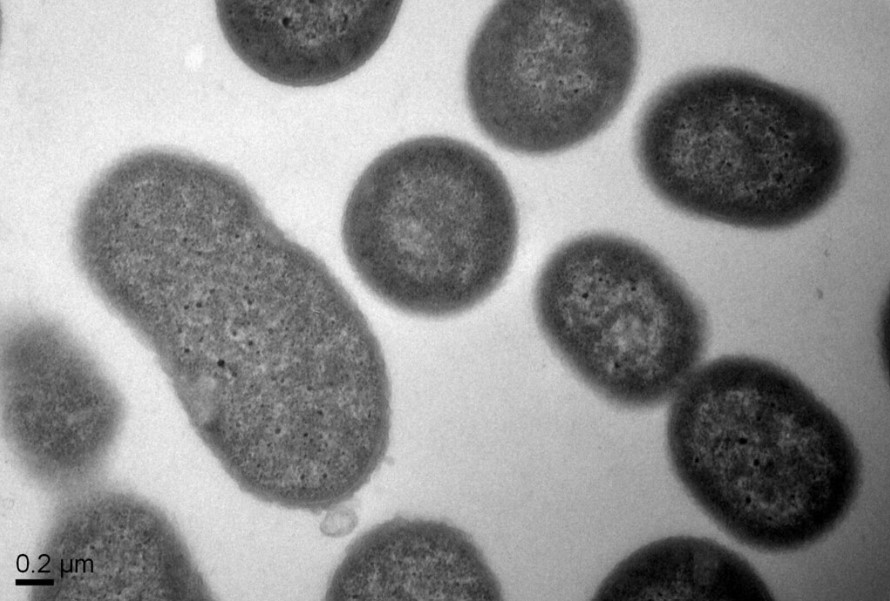How did Elon Musk grow his hair back? 6 Options
If you are currently reading this article, you’ve probably noticed that Elon’s hair has changed quite a lot and looks

From Hippocrates’s writings about the spread of disease by air, water, and places, to Egyptian papyrus paintings depicting polio, infections have been recorded throughout the ages. Epidemics we’ve experienced include syphilis, leprosy, cholera, yellow fever, typhoid fever, smallpox, and plague, among other infectious diseases.
Modern medicine has largely been able to help prevent and control the spread of infectious disease by means of vaccines, as well as through public health education and prevention. Nevertheless, an infection can still result in a number of unwanted bodily effects ranging from fever and vomiting to hair loss and weight gain.
Infections can occur when microscopic living organisms enter your body and begin to multiply. Humans may contract an infection by contact with other people, animals, through the air, soil, surfaces, or through contaminated food or drinking water. The body then reacts in its own unique ways.
An infection can result in any number of illnesses ranging from benign to fatal. Hosts with a well-functioning immune system can usually fight off the infection. Medications can also be prescribed as treatment.
Humans and bacteria have a complex relationship. While bacteria are needed to aid in our digestion, give our bodies vitamins, or curdle milk into yogurt, these microscopic organisms can also give rise to life-threatening illnesses.
Found in the human gut, soil, and water, humans can be exposed to bacteria from other people, through the environment, or from eating contaminated food, or by drinking contaminated water. Most bacteria will not hurt you, but the destructive kind can cause dangerous infections such as pneumonia and strep throat.
Bacterial strains may evolve suddenly and rapidly.
Viruses are spread through the transmission of virus particles, whether that be through direct person-to-person contact or indirect person-to-object, object-to-person contact. Unlike bacteria, viruses do not reproduce on their own. Only upon entering healthy, living cells do viruses go into action. Hijacking the cells’ metabolic machinery, they begin reproducing exponentially. These submicroscopic infections destroy healthy cells. Viruses have mostly pathogenic relationships with their hosts, causing a range of illnesses such as the common cold, meningitis, and HIV/AIDS.
Similar to many microbes, fungi can be both good and bad for the human body. Found in soil, on plants, on indoor surfaces, and on human skin, fungi are practically everywhere.
Despite the millions of fungi that exist in the world, only about 300 fungi cause infections that can lead to illness. Fungal skin infections typically develop in warm, moist areas of the body such as on the feet, groin, or other folds of skin. The lack of airflow in these areas can cause fungi to thrive. Types of fungal infections include athlete’s foot, ringworm, and thrush.
Parasites are organisms that live off of hosts in order to survive. The three main types of parasites include protozoa, helminths, and ectoparasites. Parasitic infections are typically contracted in tropical and subtropical regions of the world. Among the various types of parasitic infections are sepsis, malaria, and giardia.
Many of the typical responses we see in our body upon infection result from the immune system’s efforts to fight off foreign invaders. Fever, malaise, and inflammation are all signs that our immune systems are working hard to eliminate an infection.
Below is information on how the different bodily systems react:
An organ system that is known to circulate and transport nutrients, hormones, and blood cells to and from the cells of the body, the circulatory system is essential to fighting illness. Many diseases affect the circulatory system. Influenza, for instance, affects this system by making breathing difficult, the heart beat faster, raising blood pressure, and increasing inflammation in the body.
A healthy heart can usually fight off infection quite well. However, the flu shot, or other preventative vaccines, are typically recommended for anybody regardless of wellbeing, age, or predisposition to disease.
The endocrine system is made up of various glands producing and secreting hormones to regulate body temperature, growth, and metabolism. Viral or bacterial infections may cause adverse effects to the thyroid, one of the main organs in the endocrine system.
Disorders causing inflammation in this gland are referred to as “thyroiditis.” Other signs of thyroiditis include weight gain, hair loss, dry skin, and fatigue. Thyroiditis can usually be treated with over-the-counter anti-inflammatories and beta-blockers; less common treatments include antithyroid medication, radioactive iodine, and surgery. Many treatment plans also include a healthy diet, regular exercise, and consistent sleeping patterns.
The integumentary system is responsible for all things related to the skin, as well as the hair and nails. This system is vulnerable to various types of infections, such as cold sores, acne, boils, warts, and ringworm. “Ringworm” is a misnomer in the sense that fungus causes the infection, and not a worm; however, “ring” refers to the circular rash it leaves on the skin. This fungal infection can ultimately result in hair loss, leading people to try hair growth products and hair fiber thickening solutions.
The body’s muscular system can experience mild to severe side effects of infectious diseases. Referred to as myositis, the muscles in the body react with inflammation in an attempt to heal itself. Some viruses and bacteria may directly invade the body’s muscles. Viruses are the most likely type of infection to have effects on the muscular system. Bacteria, fungal, and parasitic infections are less common.
Although known better as an immunodeficiency virus, HIV is one example of an infection that causes adverse effects to the muscles. If left untreated, HIV can lead to AIDS. Treatment of myositis varies according to cause and severity.
Infections of the central nervous system impact the brain and spinal cord, which control all of our bodily functions, including awareness, movements, sensations, thoughts, speech, and memory. An infection of the central nervous system can cause drowsiness, confusion, and convulsions, among other side effects. Types of infections known for their impact on the central nervous system include meningitis, encephalitis, syphilis, and Lyme disease, among other types.
Respiratory infection is potentially the most well-known type of infection. Resulting in illnesses such as the common cold, the flu, sinusitis, tonsillitis, pharyngitis, bronchitis, pneumonia, and SARS-CoV-2, respiratory infections are commonly found in humans and mostly affect our lungs, noses, ears, and throats. In fact, these infections are a leading cause for seeking medical care. Side effects of a respiratory infection can range from mild to severe and may include trouble breathing, a runny nose, fever, or sore throat.
Treatment depends on the type of infection you have, as well as its severity. For a mild illness, rest and fluids usually do the trick. More severe illnesses, on the other hand, will likely need medical attention followed by a treatment plan. Treatments for bacterial infections typically include antibiotics, while viral infections may be treated with antivirals. Fungal infections are treated with antifungals, whereas parasites are treated with antiparasitics.
Measures can also be taken to prevent an infection from occurring in the first place. This can include measures such as receiving vaccinations, cleaning cuts and scrapes, and social distancing during a pandemic.
Many vaccines exist today, and they can help reduce your chances of being infected with a variety of illnesses. For instance, the CDC strongly recommends people get a seasonal flu shot as part of their defense against influenza. Cleaning cuts and scrapes, on the other hand, can help prevent infections by removing as many foreign materials from the body as possible.
If you are currently reading this article, you’ve probably noticed that Elon’s hair has changed quite a lot and looks

How Does Swimming Affect Your Body? Individuals swim for a variety of reasons including recreation, competition, and health. Regardless of

Lifestyle Tips For Better Overall Health The way you go about your daily life has a massive and direct impact

How To Make a Good Impression in a Job Interview When it comes to getting a job, interviewing may seem

How The Weather Can Affect Your Health The weather may not only affect your daily life — it can also